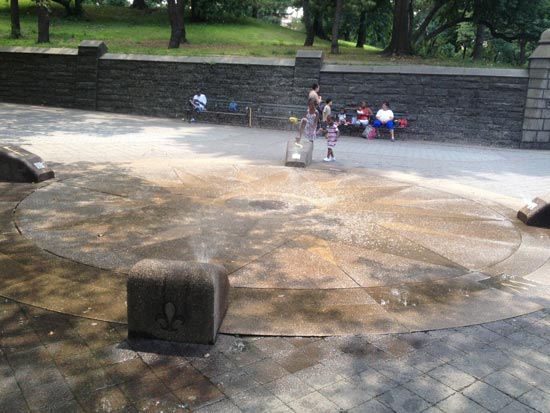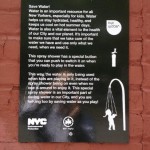EPA WaterSense: Helping New York City Save Water
By Alex Peck
Last summer, while walking through Fort Greene Park on a beautiful day, I noticed a sign posted next to an outdoor fountain describing how New York City had made it more water efficient. The fountain used to run continuously 24 hours a day. Now, thanks in part to the EPA’s recommendations, New York City’s Department of Environmental Protection (DEP) has retrofitted the sprinklers with timer buttons, which, when pressed, allow the sprinkler to operate for two minute intervals. This small effort helps New York City save about 10,000 gallons of water per day!
This water conservation measure, along with others that the DEP has made over the last four years, came about through the help of Mr. Lorne LaMonica, a Senior Scientist with EPA in the Pollution Prevention and Climate Change Section. For two years, Mr. LaMonica participated in New York City’s Green Code Task Force and was instrumental in incorporating the EPA WaterSense Program specifications into the NYC Code. The retrofitting of the fountain in Fort Greene Park is just one of the many water conservation measures implemented.

This photo shows the on/off button for the sprinkler in Fort Greene Park. This one button helps NYC save 10,000 gallons of water a day.
As a result of Lorne’s efforts, New York City has become a strong proponent of using EPA WaterSense specifications in new construction and retrofits. The city reported to EPA that in 2013, with the assistance of our WaterSense recommendations, it retrofitted 13 schools with water-efficient urinals, toilets, and faucets. As a result of installing these water-saving fixtures, these schools conserved 49,000,000 gallons of water, reduced 114 metric tons of carbon equivalent (greenhouse gases) and saved $143,000 in water utility costs! In 2014, DEP retrofitted an additional 10 schools and the water saving numbers were tremendous: 92,000,000 gallons of water saved, 211 metric tons of carbon equivalent saved, and a savings of $266,800 in water utility costs. These retrofit projects are expected to continue for years through hundreds of schools throughout the city.
To find out more about the EPA’s WaterSense program and how it’s helping communities throughout the United States to save water, visit: http://www.epa.gov/watersense/.
About the Author: Alex Peck is an Environmental Protection Specialist in EPA Region 2’s Pollution Prevention and Climate Change Section.


